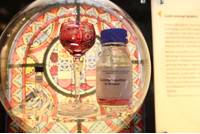Scientists in the Czech Republic and Australia have found that tumor cells without mitochondrial DNA (mtDNA) show delayed tumor growth and that tumor formation is associated with acquisition of mtDNA from host cells. Professor Jiří Neužil and his team at the Institute of Biotechnology CAS and Griffith University, Australia made the discovery. It leads to a partial recovery of mitochondrial function in cells derived from primary tumors grown from cells without mtDNA and a shorter lag in tumor growth. Cell lines from circulating tumor cells showed further recovery of mitochondrial respiration and an intermediate lag to tumor growth, while cells from lung metastases exhibited full restoration of respiratory function and no lag in tumor growth. Stepwise assembly of mitochondrial respiratory (super)complexes was correlated with acquisition of respiratory function. Findings of 25 scientists, including Professor Neužil’s team, indicate horizontal transfer of mtDNA from host cells in the tumor microenvironment to tumor cells with compromised respiratory function to re-establish respiration and tumor-initiating efficacy. These results suggest pathophysiological processes for overcoming mtDNA damage and support the notion of high plasticity of malignant cells. Cell Metabolism of Jan. 6, 2015, describes the significant discovery in full.
EUSJA General Assembly
 EUSJA General Assembly
EUSJA General Assembly
& EUSJA Study Trip
Prague, Czech Republic
March 14–17, 2013
Important links
Books
English books prepared for publication by Academy bulletin
Akademie věd České republiky / The Czech Academy of Sciences 2014 a 2015

The Czech Academy of Sciences has issued a report accounting selected research results achieved by its scientific institutes in all research areas in 2014 and in early 2015.
Full version you can find here.

VILLA LANNA IN PRAGUE
The new english expanded edition
Archive
Stopy AB v jiných titulech
Photogallery
Archive


 Česky
Česky










